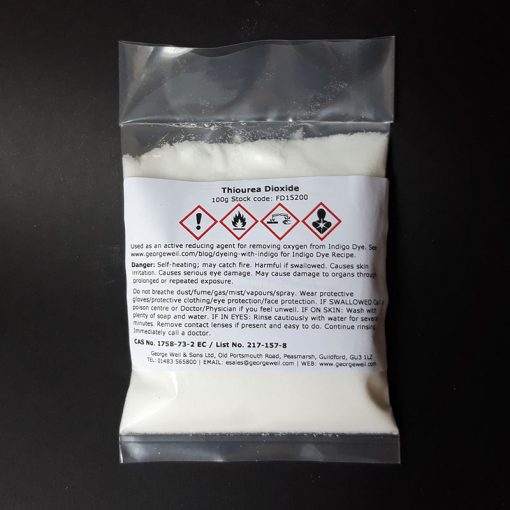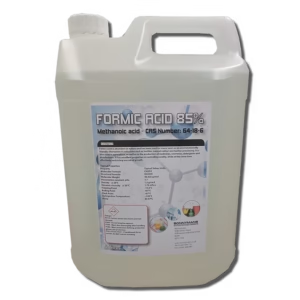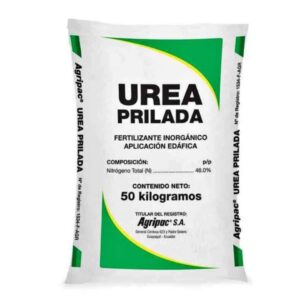Thiourea Dioxide – 100g
Original price was: $10.00.$8.00Current price is: $8.00.
Description
Thiourea Dioxide is a replacement for Sodium Hydrosulphite / Thiosulphate used in vat dyeing, discharge printing and general colour stripping on cellulose and protein fibres.
Use as an active reducing agent which removes the oxygen from indigo when combined with Soda Ash. Thiourea Dioxide is five times stronger than Sodium Hydrosulphite the alternative reducing agent. See Indigo dye recipe
To make a discharge paste. Dissolve 5g Thiourea Dioxide and 5g Soda Ash in 250ml hot water. Allow to cool and pour into a studio blender. Add 20g Indalca PA3R thickener and mix in the blender until smooth.
Use Thiourea Dioxide as a stripping agent to safely remove most dyes from protein fibres (i.e. wool and silk), as well as cellulose fibres (i.e. cotton, linen and rayon).
Method for Removing Dye Colours
- For 500g of dry fabric use 8 litres warm water, 10g Thiourea Dioxide, 20g Soda Ash and 2.5ml Synthrapol. As wool is sensitive to alkalis, reduce the Soda Ash to 10g.
- Place warm water in a non-reactive dye pot (stainless steel, enamel, or glass – DO NOT USE dye pots or utensils made from cast iron, aluminium or copper). Add Thiourea Dioxide, Soda Ash, and Synthrapol and stir to dissolve.
- Add wetted fibre and stir for one minute.
- Heat rapidly to 100°C for cotton, linen. and rayon (85°C for silk and 90°C for wool).
- Stir intermittently and maintain the temperature for 15-20 minutes (5-10 minutes for wool – be careful not to over agitate the fibre as this will cause felting).
- Cotton can be removed from the pan immediately but wool and silk should be left to cool down in bath.
- Rinse with warm water and neutralise in a solution of Citric Acid (use at a ratio of 5g per litre of water).
A faint smell of ammonia indicates that the Thiourea Dioxide has been exhausted. If this occurs, and not enough colour has been removed, rinse the fibre and repeat the above steps.




Reviews
There are no reviews yet.